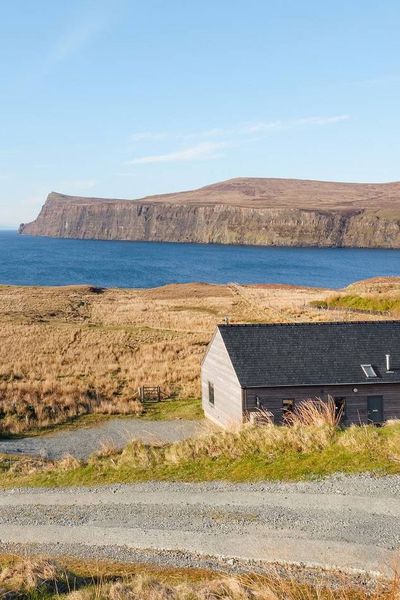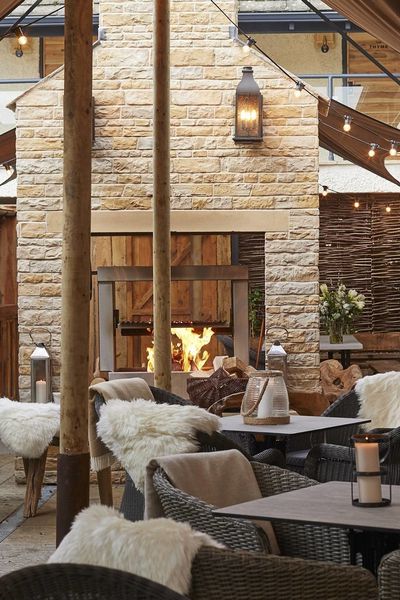
Agriturismo slow travel in Italy: Rural authenticity, Eco-sustainability, Tradition
Sawday's Expert
5 min read
If you’ve spent some time planning a trip to Italy, you've probably come across the term agriturismo. Most commonly translated as farm stays, it's a unique type of accommodation built on tradition-sustaining elements like organic food products, off-beaten-track locations, eco-sustainable practices, authentic, traditional lifestyles and passionate hosts. Far more than a simple type of holiday though, it is a cause, an important part of Italy’s pastoral present and, hopefully, it’s future.
I had the fortune of stumbling upon the agriturismo movement in its greener stages back in the 90s, while working as a writer of travel guidebooks for an American publishing house. My mission was to select accommodation of particular character, that distanced itself from the classic hotel model prevalent throughout the entire country. At the time, the British bed & breakfast format only existed in what were called affittacamera, a very basic room offered within the home, predominately by widows looking for supplements to their pension. In search of the unusual, I was introduced to the emerging agriturismo concept, which was originally an exchange proposal: room and board for labour in the vineyards, olive groves or fields. This quickly developed into a full-fledged accommodation segment, offering rooms or apartments within the main farmhouse or outer buildings, plus meals using strictly in-home produce referred to as ‘zeroKM’.
The economic, socio-cultural and environmental potential was massive and perceived as a potential life raft for a dying agricultural sector characterized by small family farm businesses in economically deprived rural areas. Hence the fact that with government funding, the project took off in 1985. Today Italy is one of the largest agricultural producers and food processors in the EU and Agriturismo farms number over 23,000 in all 20 regions.
During my extensive travels for that original piece, I combed the back roads of the boot, from the majestic Dolomites (where the majority of Agriturismo farms are located, together with Tuscany) to the southernmost tip of Puglia and the islands, all with the guidance of the national association, Agriturist.
I sat at the table of hundreds of families who invited me in with curiosity and a large dose of doubt that international travellers would in fact embrace the simple lifestyle they were offering. Enthralled by the intense beauty of diverse, natural surroundings unknown to most travellers (and even Italians!), along with the passion of hosts and their stories of passing down practices and traditions through layered generations, I knew I had struck upon something very special indeed. The question was whether or not it could secure a larger audience.
I stayed in spartan bedrooms with shared bathrooms, and occasionally animal stalls adjacent to a farmhouse. Amenities were scarce and the owners’ attention was often understandably divided between guests and farm work. The choice had to be made which to present to a public with an unknown willingness to experiment with alternative travel in Italy.
I needn’t have worried. Over the years I have witnessed enormous advances in the offerings, from experiential food itineraries on simple farms to upscale historic palazzi with prestigious wine estates. Agriturismo has been vital to the survival of many rural communities, contributing to the conservation of local heritage, environment and the development of sustainable farming practices, while offering travellers a chance to dig down into layers of history and local tradition, with an upfront seat to the “real Italy”.


Within our rich collection of agriturismi, there are many places which I visited when they were first starting out and are now, I’m enormously glad to say, in the hands of the next generation. Sovigliano, in the Chianti hills of Tuscany where Patrizia and Claudio, along with daughter Claudia, still welcome guests as friends in their timeless home with untouched landscapes and hiking trails to medieval villages and castles.
Or the Masseria Il Frantoio, where we spent a memorable Easter holiday with Rosalba and Armando when my daughters were very young (one learned to ride a bike there!) – and who can forget the multi-course Easter meal with delectable Puglian specialities garnished with wildflowers that lasted 3 hours accompanied by Armando’s stories. Newer additions like the spectacular Biotique Agrivilla i pini (pictured at top) are also shining examples of the core principles.
Agriturismo is one of the great (the few?) true success stories of modern travel, in which the relationship between guest and destination is something positive for everyone. It has preserved Italy’s past, ensured the future of some of its oldest traditions and provided travellers with a genuine way to engage with rural Italy. I cannot recommend enough that you try it. Sit with these families, eat with them, talk with them, and raise a glass to something truly beautiful.
Browse our Agriturismo holidays >
Want more travel inspiration? Get our email updates direct to your inbox.
Sign up >Share this article:
You might also like
Seven days in Sicily: One volcano, two kids, no phones

Carmen McCormack
Guest Expert
5 min read
Inspiration of the day: Handmade tagliolini by chef Domenico Consoli, Masseria Montenapoleone

Christopher Wilson-Elmes
Sawday's Expert
5 min read
Pizza, lasagna and beyond – Italian specialties to tempt your teenagers

Nicole Franchini
Sawday's Expert
5 min read












